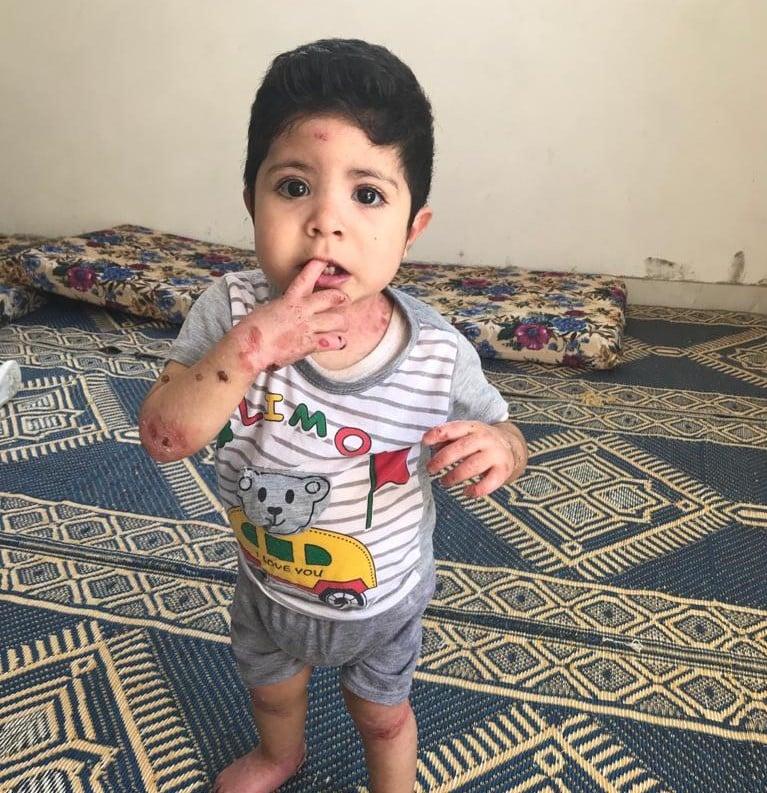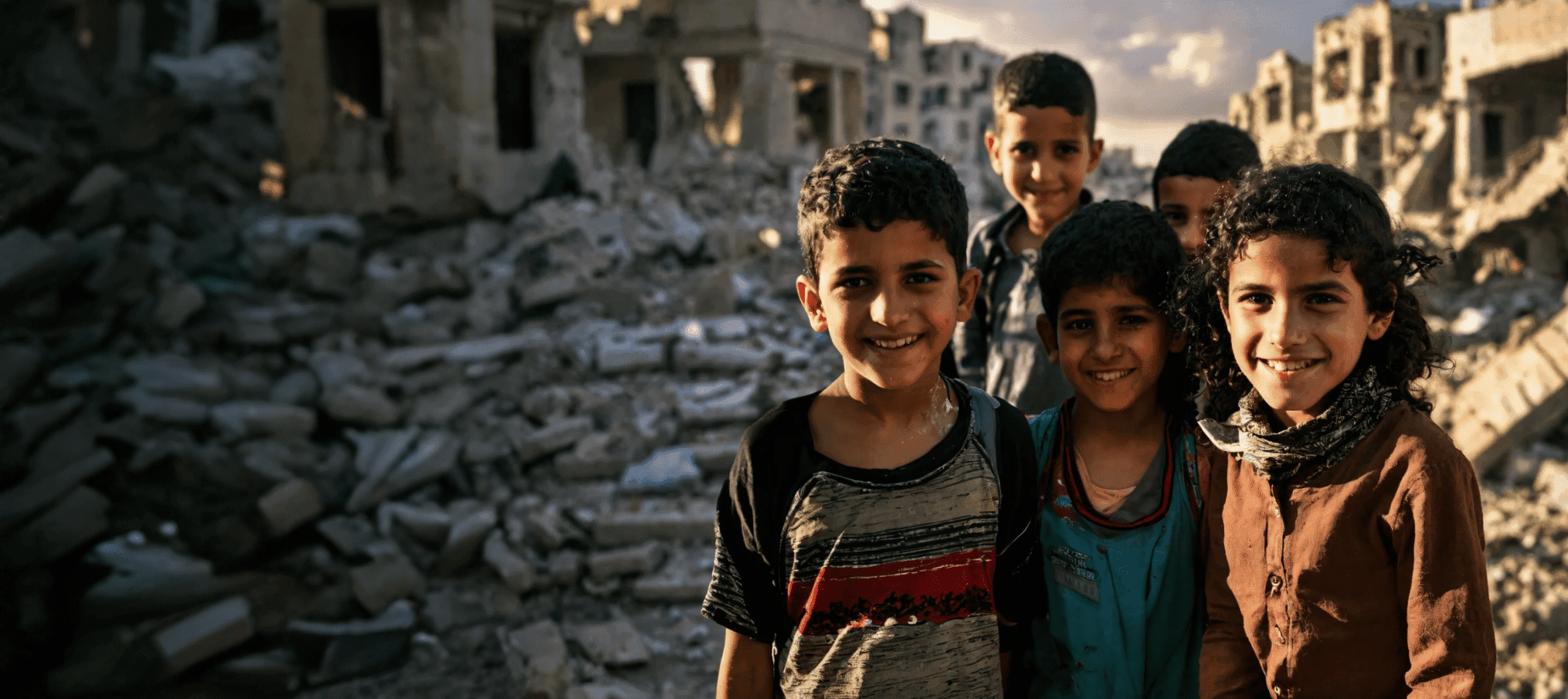Today in Gaza the language of violence and despair is spoken; Every need seems superfluous when there is no food and when one's life seems to have to end before a new sunset, and the first to be forgotten are those who have so many needs. Too much needs. Like the "butterfly children".
We have long been involved in supporting the "butterfly children" of Gaza: we have often told how we try to help them survive in a hostile world, where any contact with the outside world can become a death trap. In a context like that of Gaza, especially after October 7, thinking of being able to access sterile medication every day, if not several times a day, seems impossible; yet it is a necessary condition for those suffering from Epidermolysis bullosa.
But where does this disease come from? And how is it treated, if it can be cured? To better understand what prospects for action exist at the moment, now that three "butterfly children" are trying to leave the Strip to access European care, we asked Daniele Banfi: he is a journalist by profession with a degree in Biology and specialized in Science Communication, now editor of the Umberto Veronesi Foundation Magazine.
Dr. Banfi, but what is the disease of the "butterfly children", Epidermolysis bullosa?
In common parlance we speak of "Epidermolysis bullosa" as a pathology, but in reality this definition is inaccurate: in fact, this term indicates a group of rare diseases of genetic origin, which have in common the condition of extreme fragility in which the skin of patients is found. This is why they have taken the name of "butterfly children": their skin becomes fragile, light as butterfly wings.
This fragility is due to a series of genetic mutations that compromise the formation of those proteins that serve to keep the skin adherent; These "defects" lead to the formation of fragile skin, which cannot hold together. The skin then tends to flake very easily, even in response to minimal trauma: minor traumas can create lesions that struggle to regenerate.

He said that it is a group of pathologies; What are the characteristics that differentiate them from each other?
There are many different possible manifestations of these diseases, depending on the type of genetic mutation that occurs in the patient; however, we can group them into three main categories, which can be assimilated to three forms of Epidermolysis bullosa.
The most common is the so-called "simplex" Epidermolysis bullosa, responsible for about half of the cases existing in the world; This is the least serious type, because it does not affect the whole skin but only some areas, usually the hands and feet. For this reason, it is almost never lethal, but the pain and difficulty of carrying out simple actions compromise the lives of patients in a more or less important way.
The "dystrophic" and "junctional" forms, on the other hand, are much more serious – and fortunately much rarer – since blisters and cuts are generated all over the body, and being able to avoid infections becomes an impossible task. One of the great problems of this disease, in fact, is the compromise of the defense system constituted by the skin: the gashes and blisters become an access route for external pathogens, which, free to attack the body, can cause even lethal infections.
Is it a treatable condition, at least in an appropriate context such as a European research center?
The effectiveness of medical intervention depends very much on the type of genetic mutation and, therefore, on the patient's symptoms. In less severe cases, it is possible to act with symptomatic therapies, which therefore do not curethe disease but alleviate its impact on the patient's life: the primary objective is the protection of the skin from trauma. When lesions form, it is important to intervene with the use of sterile bandages on the areas affected by the sores to protect the skin. In addition, painkillers, anti-inflammatories and antibiotics in cream form can be administered to reduce the risk of infection.
This type of intervention is rather cheap, because it does not require high-tech machinery or experimental medicines: only simple antibiotics and bandages, which can be found everywhere with relative ease. Of course, this is true for us, in Italy; in a context like that of Gaza, even finding a place equipped with enough bandages to be able to change them often, painkillers and antibiotics, seems utopian.

And as for the most complex cases, are there treatments accessible or developing?
Some very serious cases of Epidermolysis bullosa have been successfully treated, through therapies that are still experimental, therefore aimed at a selected sample of patients.
A turning point was the case of a Syrian child, suffering from a very serious case of "junctional" E.B., who in 2017 was brought to Germany to undergo gene therapy. This is a process that aims to introduce the correct gene. Contrary to symptomatic solutions, inserting the correct gene restores proper functioning; This way the skin can grow without any defects.
The treatment was developed thanks to the pioneering studies of Holostem, a spin-off of the University of Modena and Reggio Emilia with professors Michele de Luca and Graziella Pellegrini (who thanks to this result obtained the "Lombardy is research" award). What they did was to grow a portion of the child's skin in the laboratory in which they inserted the working gene. They thus created real "sheets" of healthy skin, capable of producing those proteins necessary not to flake at the slightest touch, which in Germany were then transplanted into the injured areas, healing the boy.
Another strategy that is being tested, aimed at intermediate forms of Epidermolysis bullosa – those too severe to require only a tamponade of symptoms, but not yet irretrievable except for transplantation – is gene therapy in gel. Unlike classic gene therapy, it does not require a skin transplant, but consists of a gel that contains the "correct" version of the mutated gene: once spread on the injured areas of the skin, the gel stimulates the production of the proteins necessary to fortify the epidermis.
It therefore seems that, in perspective, even the most severe forms of E.B. may be curable in the future!
The problem with this type of therapy is certainly the cost: in the case of gene therapy we are talking about figures that exceed one million euros. Furthermore, we must always remember that Epidermolysis bullosa is a rare disease, affecting about 500,000 people worldwide. When it comes to rare diseases, unfortunately, the comparison between costs and the number of beneficiaries is often merciless, and the gap between the privileged who can be selected and access experimental treatments and all the rest of the patients widens dramatically. It is already difficult to access gene therapy in our country, let alone elsewhere.
In conclusion, what can be done to help Gaza's "butterfly children"?
The only possible solution seems to me to be at least to try to guarantee children access to hospital centers equipped even only with basic medical devices: gauze, bandages, antibiotics...
As I explained before, these symptomatic treatments do not allow patients to recover; however, they help them survive , limit the daily burden of the disease and decrease the risk of infection and death.
Helping to bring sterile materials for dressing to Gaza is therefore certainly a great, very great help, as is trying to get them out of the Strip to reach Italy. It is essential to act as much as possible in the situation in which you find yourself: helping the "butterfly children" to suffer even just a little less, even just to soothe the pain of sores and infections, is a gesture that is anything but useless, even if not decisive. It means helping them to lead, as far as possible, a normal life.



















